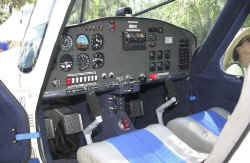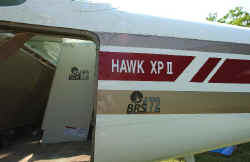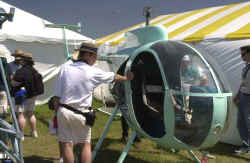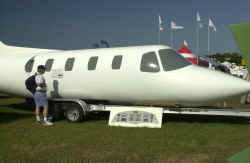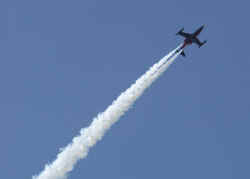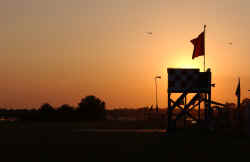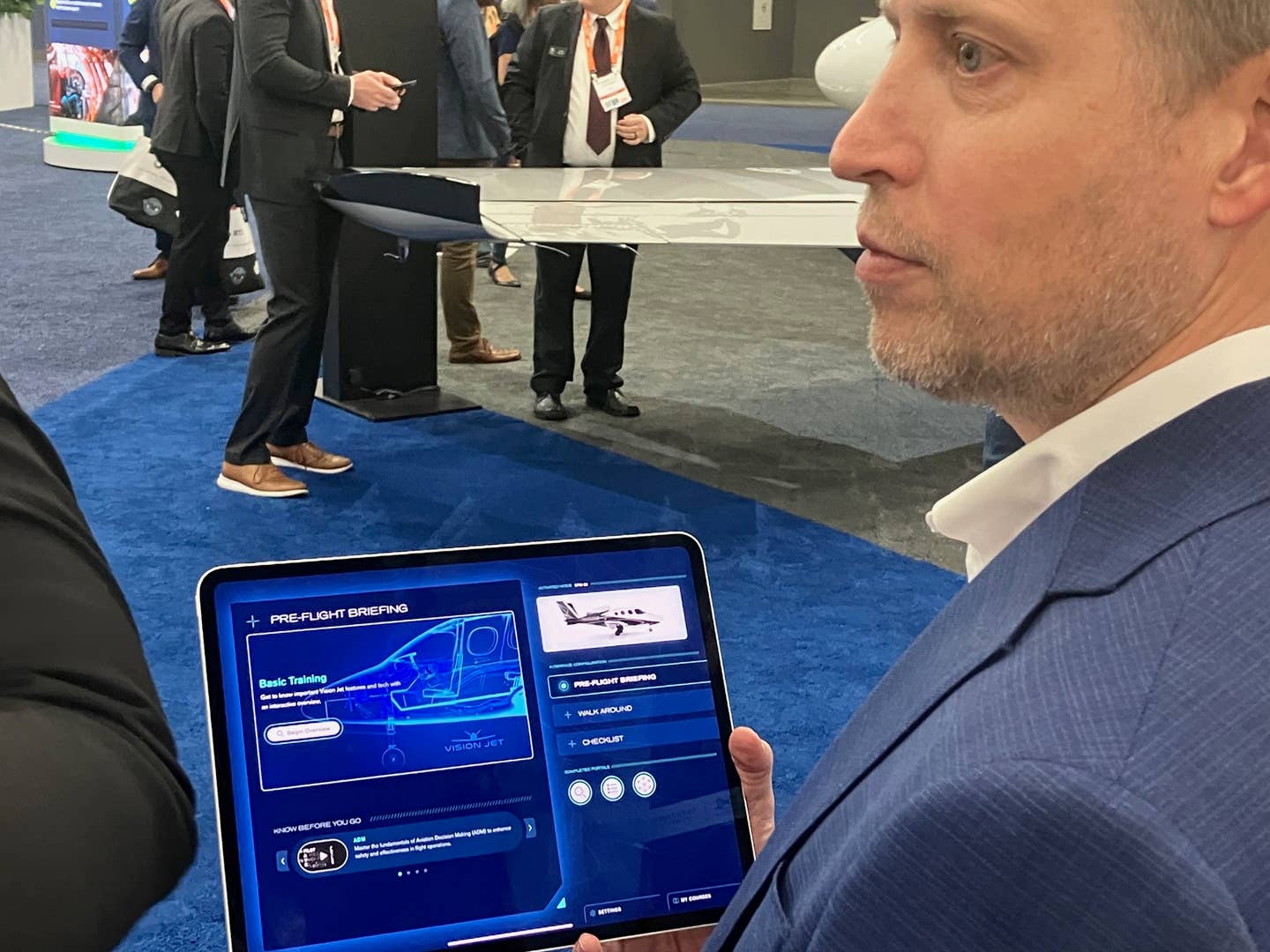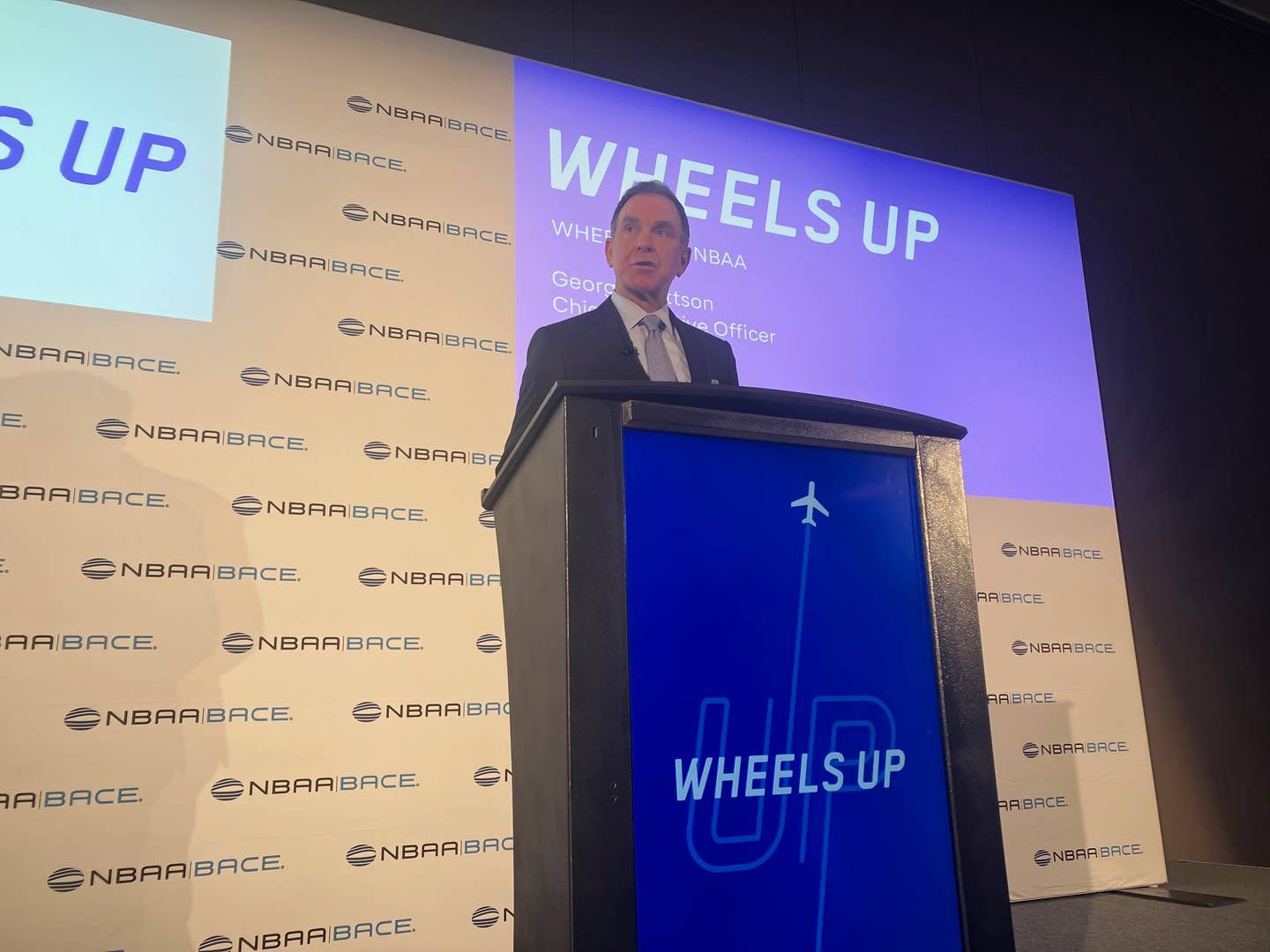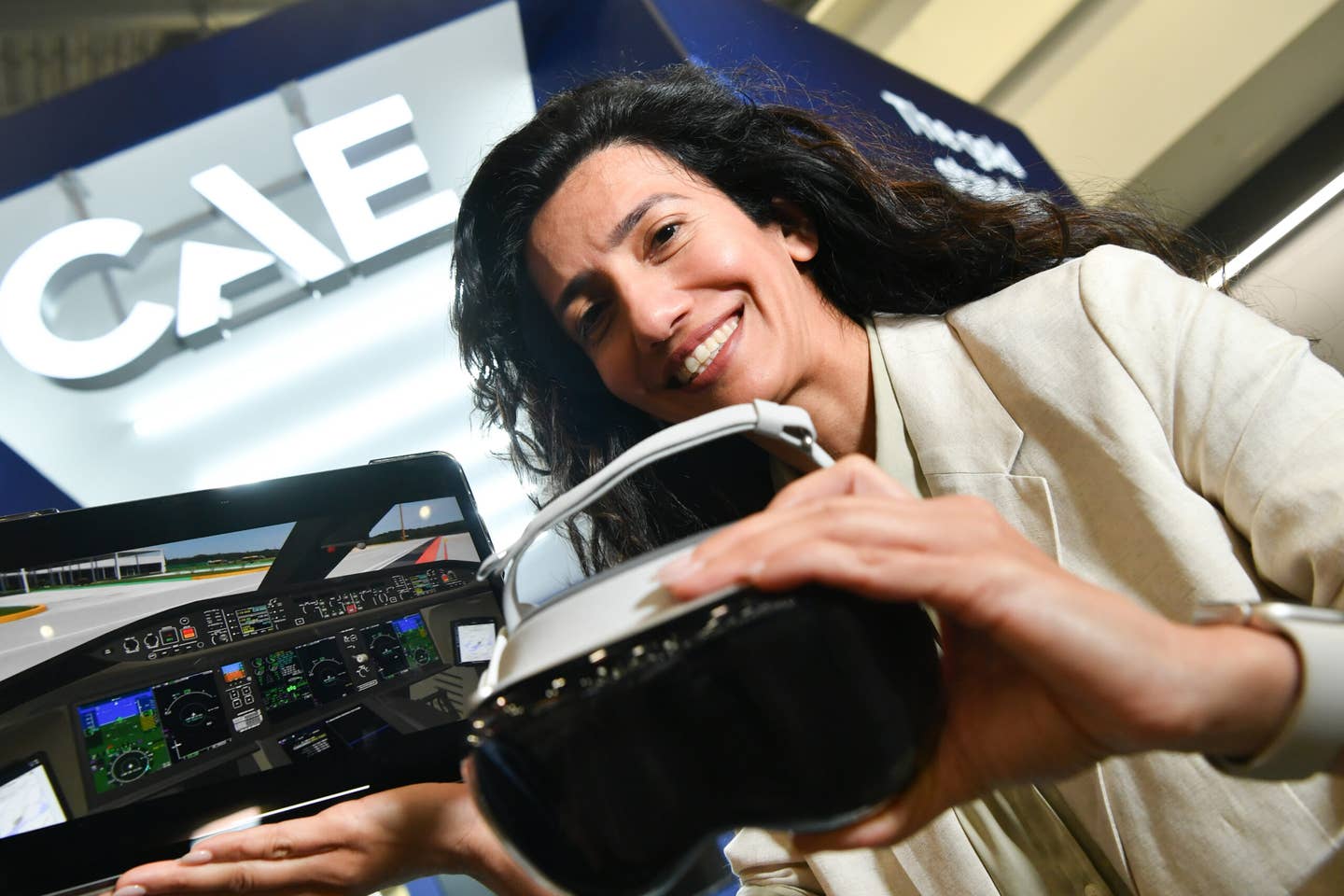Update Report: Sun ‘N Fun 2002
SPECIAL REPORT. It must be something in the water, because the giddy feeling just won’t subside at Sun ‘N Fun 2002. There are looping Lears, skydiving Skyhawks, morphing models, space shots … and a volume of visitors just having a great time. As more than one patron stated, “You gotta go.” Avweb’s Away Team did go and filed this update.
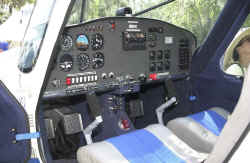
Why They Come ...
LAKELAND - Walking up the flag lined gate of this year's Sun 'n Fun entrance, it's not hard to feel the energy of the largest southeastern U.S. fly-in of the spring - and this year, something special is in the air. You'll hear it in the voice of the woman in line behind you, "Well, he's seven and he's been here eight times," or the man who says, "I don't know what's different this year, but you gotta go." Sun 'n Fun isn't an air show - it's a relationship - and one that took a beating last year. But you wouldn't know that here.
... To See The Fledglings Mature ...
In spite of some difficult times, this year we saw some of last year's new additions back, and with supporting numbers and improvements. The OMF Symphony 160, which is aesthetically a modified Glastar kit on beefier gear but has numerous other production refinements (see last year's coverage), has matured with a total of 22 deliveries for 2001. Not bad for a design that was granted its FAA type certificate at last year's show. As the name suggests, the OMF Symphony 160 flies behind a 160hp Lycoming. It may be less obvious that the airframe/powerplant combination will carry two people plus 165 pounds of baggage and a little more than 30 gallons of fuel at about 128 kts, but these things are also true.
The aircraft sports a new gross weight of 2,150 pounds - that's 10% more than before - giving the two-place, side-by-side high-wing a useful load of 700 pounds. It's already JAR 23- and FAR Part 23-certified. It arrived at the show this year waiting on IFR certification and with a fresh new U.S. dealer network to support the German-built design. Until recently, the company has not had a reliable distributorship in place, largely because an arrangement with distributor AMD (which still markets two unrelated designs) fell apart before it really began. Now, U.S.-purchased aircraft will be built in Germany - as they always have been - and shipped to either Arlington, Washington; Sheboygan, Wis.; Leesburg, Va.; or Ft. Lauderdale, Fla., depending on which is closest to the customer. A new U.S. dealer "800" number posted on the company's web site automatically routes call to the dealer nearest to the caller's location.
... Technology Traded ...
Just a few yards a way from the sleek new Symphony sits the tried and true Cessna Skyhawk - with something decidedly new about it. The aircraft on display is sporting a ballistic parachute recovery system provided by BRS, which should be STC'd "any day now." In aviation lingo, that means possibly within the next couple of months and almost certainly this year. The weight limit for the chute has been tested to withstand deployment from a fully packed R-series Skyhawk flying at 163 knots. If it isn't the aircraft's exact Vne, it's very close to it. As we reported in Monday's coverage, the Skyhawk's BRS system will cost safety-conscious owners more than $16,000 to purchase, plus about 50 hours of an A&P's time to install.
Installation, aside from the unit itself, actually includes the addition of a rear support member in the area of the fuselage just behind the rear windows and three mostly external kevlar straps. The straps are neatly tucked under a breakaway housing that does little to affect the aesthetics of the aircraft positively or negatively and tie in to the wing spar in front and the new support member in the rear. The Cessna-styled BRS utilizes the same canopy as incorporated into the Cirrus SR20 and SR22 aircraft. Owners should understand that the system is not intended to save the aircraft and likely will not. However, if the chute is used, occupants are likely to walk away from the crash under their own power.
General aviation pilots who think that ultralight technology has nothing to offer them might want to think again. The technology and popular opinion that has allowed the mating of parachutes with airplanes for safety's sake comes directly from experience in the ultralight market. By mid-2000, BRS had already claimed 134 lives saved through use of their products. The more experienced pilots among us may wonder how many of their friends would still be with us if the systems had been available since planes have been flying.
... And Updated
Many customers will tell you that the tale of Revolution Helicopter Corp.'s single-place homebuilt Mini-500 helicopter is everything that's bad about the kit industry. The Mini-500 design became popular through impressive airshow displays, fantastic performance and appealing aesthetics. True enough, selling kit aircraft is as much about selling a dream as it is selling an aircraft - you will not find one complete without the other. Unfortunately, the dream of the Mini-500 lost all of its charm when the prototype and first customer completions quickly showed engineering flaws that led to cracked airframes and aerodynamic tendencies that led to a few deaths. In 1999, the company closed its doors and, with the owner disappeared, warehoused supplies were auctioned - but not before claiming some 500 kits sold. The tragic and often sordid tale was for many the death of a dream, but for many more it was seen as a sharp blow to the kitplane industry as a whole.
Now, Stitt Industries Mini-500 Conversions, a builder's support company that has been supplying die-hard Mini-500 enthusiasts with design upgrades and customer support in the absence of an official manufacturing company, is gearing up for the introduction of a turbine Mini-500 kit. We're told that the gremlins have been cast out through time-tested adjustments. The "new" aircraft will benefit from a mass support system that resolves the frame cracking problems, the addition of tapered roller bearings in the gearbox, a stall strip on the horizontal stab to prevent engine-failure-induced nose tuck, and more ... but, of course, it's the 95-horsepower Solar Turbine that brings the dream back to life. If the $55,000 single-place turbine helicopter kits are announced at Sun 'n Fun, they will represent a product that can cruise at 115 mph for 2 and 1/2 hours with reserves while burning a bit more than seven gallons per hour - and, hopefully, a sincere new face for a tired and tested one.
Marshmallow Wishes And Gumdrop Dreams
This Year's Kit-Jet - An Eight-Place
It just wouldn't be a modern-day air show if at least one kitplane company wasn't rolling out a mock-up of their hot new super-exciting business/personal jet. This year's contender is Aerocomp Inc. If we have our doubts, they may all be put to rest when the privately-funded, finished prototype of the eight-place carbon fiber pressurized jet, powered by the same engine used in the L39 Albatross, shows up at Oshkosh. The company does not currently have a mold or a plug (from which the mold is made) to make skins for the wings, and the images they're offering of the jet do not include air intakes for the fuselage-mounted engine ... which might tend to slow up production. But they assure us "we'll make it [read: have the jet flying by Oshkosh]." If they do, more power to them ... and the thousands of oompa-loompas they must have hidden away at their shop. May they be similarly proficient at finding a way to get the aircraft insured. (That task is something has thus far eluded other current kit-jet manufacturers like Maverick Twinjet, which has been flying its prototype for years now.)
Aerocomp already produces a line of prop aircraft and says they've sold some 300 of their heavy-hauling turbine or piston-powered Comp Air line of aircraft, and that about 60 of those are currently flying thanks to the strong support of builder assistance centers. Unlike the yet-to-be-built but flying to Oshkosh jet, those aircraft are built with vinyl-ester and fiberglass, which some other manufacturers shun as second-rate, preferring high-temperature pre-impregnated carbon fiber for their high-end models. Comparatively, Aerocomp's approach seems to be a frugal one, more concerned with "getting it done" than anything else. We looked at a few of the aircraft on the flightline and the interiors were comparatively spartan. The engineering and workmanship of the designs we saw seemed similarly ... frugal ... and more than a bit unorthodox. (FYI: We asked about one design's ultimate load and got three different answers from three different company reps, but maybe we weren't asking the right person.) The air show is littered with examples of the machines, but we can't think of too many uses for non-certified (read: non-revenue-generating) aircraft capable of both flying into and out of a very short strip and also hauling 2,000 pounds while cruising at better than 200mph. Aerocomp Inc. is based at Merritt Island, Fla.
It's Show Time!
On The Tiger's Tail ...
Bruce Bohannon rolled out in the pre-noon hours Tuesday to prepare for his shot at a 40,000-foot time to climb/sustained flight at altitude record for a piston-powered aircraft of class C-1.b (piston engine aircraft weighing 1,100 - 2,200 pounds). Bruce was in the plane for an hour before it even got rolling, baking in the cockpit in extra clothing that would keep him warm for the high altitudes ... provided his sweat didn't freeze. The hour-long sit is actually a breathing ritual. Bruce sucks up pure oxygen to purge his system of bends-inducing nitrogen. He's experienced the bends once because of the rapid ascent/descent process and isn't real anxious to feel it again. His exceptionally modified Exxon Flyin' Tiger reached an official 35,497 feet in sustained flight November 28, 2001, but for some people (read: Bruce) that's not good enough.
... And Claims (Another) New Record (Unofficially)
Tuesday's run took Bruce to "somewhere near 37,400 feet," where all was not well - 37,300 was the number he had to beat for a new record. Bruce experienced extremely high CHT readings and vibration as he was headed toward some weather. Requesting a turn from ATC, Bohannon was advised that a turn would require a descent and given what he perceived as a less-than-perfect run, Bruce basically replied with, "Good idea." Back on the ground and surrounded by reporters, Bruce's business-as-usual smile was still ringed with the impression of his oxygen mask. He surmised that he'd probably been too focused on monitoring the high CHT readings and may have failed to lean the mixture quite right in the process. He may have been left standing out in the hot Lakeland sun with his long underwear on, but his spirits were, as always, undeterred. "We brought the airplane home ... with all the Elite [engine oil] still in it, instead of on it." Wednesday, an EAA news release stated that Bohannon had reached 37,536 feet and had to break 37,300 to set a new record. It turns out that a temperature reading of three degrees above standard made all the difference. For now, we're still waiting on the "official" record verification to come from the National Aeronautics Association. The 40,000 foot barrier also awaits - likely, for Oshkosh.
Looping Lear
Yep, now we've seen it all. First we saw the emergence of Jimmy Franklin's jet-powered Waco biplane debut a couple years back. In what could be an effort to top Franklin's act, airshow veteran Bobby Younkin has taken jet aerobatics to new heights. Younkin, who was most recently known for his aggressive aerobatic performances in the Sampson replica, has now stepped up into a Lear (announced as a Lear 25 although the bulb forward of the horizontal stabalizer and the size of the windows led us to believe it might be a 24). That's right. The corporate bizjet normally reserved for transporting executives to all those ohh-so-important meetings is now an aerobatics platform. Younkin made history on Monday when he flew the very first Learjet aerobatics routine in the world. Complete with smoke oil trails emitting from its powerful engines, the red jet sailed through the sky in a series of loops, rolls and other aerobatic maneuvers usually reserved for aircraft such as the Sukhoi, Extra or Pitts Special. Younkin is no stranger to this type of flying. As you may remember, he flew a Twin Beech on the airshow circuit for several years. However, it was a tad bit slower than this latest speed machine.
Space, The Final Airshow Frontier
While people may argue about which aerobatic design has the greatest vertical penetration ability, nothing beats the show put on by an unexpected star at Monday's afternoon performance. With an act that's truly out of this world, the Space Shuttle Atlantis blasted off around 4:45 p.m. (local) out of Cape Canaveral - nearly 90 miles away from Lakeland's Linder airport - yet readily visible from the fly-in grounds. Airshow announcers even took a minute to draw the crowd's attention to the eastern horizon, where the spacecraft's exhaust trail was clearly seen. Coincidentally, this launch occurred during Bobby Younkin's inaugural Lear "25" performance. So, who said that all airshows are alike?
Local news reported that fighter jets were used to clear the airspace of two general aviation aircraft that had wandered too close to the Cape. We mentioned Monday that you should look out for special flight restrictions due to the shuttle launch ... apparently not everyone who should be is reading AVflash.
And theres still more new to talk about in AVweb's concluding coverage this weekend.
AVweb News Writer Art Weiss contributed to this report.
Complete Coverage Index
- 1. Special Report: Sun 'N Fun 2002
-
The opening of Sun 'N Fun 2002, although punctuated by tragedy, was buoyant and upbeat. Glorious weather and capacity crowds in the display areas may combine to make this among the best shows in years. Avweb's Dave Higdon is in Lakeland and filed this report.
- 2. Update Report: Sun 'N Fun 2002
-
It must be something in the water, because the giddy feeling just won't subside at Sun 'N Fun 2002. There are looping Lears, skydiving Skyhawks, morphing models, space shots ... and a volume of visitors just having a great time. As more than one patron stated, "You gotta go." Avweb's Away Team did go and filed this report. By Glenn Pew.
- 3. Closing Report: Sun 'N Fun 2002
-
The weatherman called a close to Sun 'N Fun as patrons launched to beat approaching weather. It was a good show for patrons and exhibitors alike (and a good showing by patrons and exhibitors alike). As he prepared to head for home, the skies returned to blue and Avweb's Dave Higdon sat back and filed this report.
- 4. Sun 'N Fun 2002 Sport Pilot Forum
-
Not everyone was basking in the Florida sunshine all week long at Sun 'N Fun 2002. Some folks were attending a variety of educational forums offered on a multitude of topics. One of the most popular was the Sport Pilot certificate forum, featuring guest appearances by the FAA's Sue Gardner and Mike Gallagher. AVweb's Arturo Weiss also was in attendance and filed this report.
- 5. Sun 'N Fun 2002 Image Gallery
-
Photography by Bob Kaputa.
- 6. Sun 'N Fun 2002 Image Gallery II
-
Photography by Bob Kaputa.

